

Czy wolisz polską wersję strony elektroda?
Nie, dziękuję Przekieruj mnie tamgumisie wrote:You can do something like this on semiconductors. Diode in a row with a battery. It is enough that the external supply voltage will be the same or slightly lower (diode conduction threshold) than the battery voltage. It can also be higher. The current flowing through the diode will be very small. The schottky diode has a small conduction voltage which will reduce the loss of battery life.2. It does not meet the requirements of col. CMS . "connector for an external power supply, with the option of disconnecting battery power after connecting?".
Adamcyn wrote:I do not think it's about bragging, I made the "meter" out of curiosity. http://www.circuitvalley.com/2011/08/accurate-lc-inductance-capacitance-meter.htmlDo you boast about how it works?
Adamcyn wrote:I do not know, I did not check, the description says it should. Greetings.Will this coil also face?
eurotips wrote:These data are not strictly accurate. In his technical data I read that the power supply for proper operation is 5-12V . I used a 6V / 1.3Ah battery and during the test it shows approx. 6.6V and the tester, of course, works properly.... And the most important thing, the tester needs 7.2V to work properly ...
DiZMar wrote:Umnyj wrote for fun, durak read because it's interesting .... so that this description of possibilities from this link will be commented on. What lowest voltage can be given to input 78L05 to obtain a stable voltage at its output? and this is the right answer when it comes to the minimum input voltage, but also you have to remember that there can be another stabilizer, eg LM2950-5.0, but even the best LDO will not be stable from 5V. In addition, the case is complicated by the measurement of this voltage by the processor, in my copy within 7.2-8.0V displays me Battery Weak but the tester works normally, 7.1V and below it is unfortunately Replace Battery from here my 7.2V about which I write one time in a row. This can, of course, easily be bypassed by changing the value of the voltage divider so as not to initiate Makefile and freely adjust these thresholds.These data are not strictly accurate. In his technical data I read that the power supply for proper operation is 5-12V.
DiZMar wrote:A colleague talking about a gel aka? I have somewhere a small "jelly" from a Chinese flashlight, probably with 300 mAh, even with a simple bridge for charging from the network. I looked just a moment and the size would fit, only in these Chinese quickly self-discharge occurs, so I do not know if it pays off. For me, the tester is still aging - waiting for some hardware failure.I used a 6V / 1.3Ah battery
gumisie wrote:Hehe wrote but I would rather not do it anyway I do not remember exactly what voltage there was or was 6V or maybe less than 5V after charging. Probably the best solution is a battery with a telephone with inverter and charger if, someone has everything in stock. Due to the fact that you do not have to open the tester to replace / recharge. I wonder how such a solution would work in the multimeter because I use more often and of course longer time with the indicator of a discharged battery. I think you will have to order several converters and chargers for Li-ion, because the old battery would of course be found..Loading from the network, no harm to health and tester.
E8600 wrote:I mean about 6V / 1.3Ah removed from the cash register (I've already written about it in this thread), because it did not issue a lot of receipts (the power needed for printing is about 2A). In this tester it will serve for many years (in case of recharging up to 7V from the laboratory power supply) and if not, I will post the next one. I have them on bundles after exchange at the cash registers. The fact that the tester works properly with the voltage of 66.V being displayed during the test undermines the thesis that:DiZMar wrote:A colleague talking about a gel aka? I have somewhere a small "jellyfish" from a Chinese flashlight probably 300mAh even with a simple bridge for charging from the network ...I used a 6V / 1.3Ah battery
eurotips wrote:. Fact @eurotips "wrote about" your copy "and a copy of it was uneven.I wrote about the copy received from the" electrode shop "without any modifications, so maybe both (me and @eurotips) wrote the truth.... in my copy within the limits of 7.2-8.0V show me Battery Weak but the tester works normally, 7.1V and below it is unfortunately Replace Battery from here my 7.2V about which I write one time in a row ...
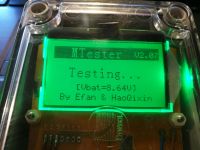
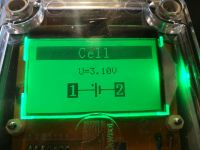 As I used it almost every day, I immediately felt the lack of it and now I have to buy something else quickly. I saw that newer versions scroll with the Zener measurement and color lcd in the thread? Could someone recommend something tested? The best option is to buy alllegro. Thank you. Possibly someone may have bought it with the possibility of reselling it very willingly.
As I used it almost every day, I immediately felt the lack of it and now I have to buy something else quickly. I saw that newer versions scroll with the Zener measurement and color lcd in the thread? Could someone recommend something tested? The best option is to buy alllegro. Thank you. Possibly someone may have bought it with the possibility of reselling it very willingly.
bestler wrote:From the series "Pole is able" ... yesterday, when I bought other Atmega 328P for other purchases. Before the exchange I unsuccessfully tried to rip the software. After replacing the prock it turned out that the soft one does not fit in one of the themes - the effect was a blank screen. I read and it turned out that I have some older version with quartz 8Mhz. The forum came with help: https://www.eevblog.com/forum/testgear/lcr-t4-mtester-v2-07-lcr-meter-black-block-issue/, where friends shared a soft match for my tester. I tried to upload softy from https://yadi.sk/d/yW8xa5NJgUo5z, but the Cyrillic alphabet itself ... Changing prock banal -1 min.My tester has been damaged after more than 2 years of use. The screen with information about testing the element takes much longer than usually even several seconds and then there is information about the detection of the cell - a function that nobody has discovered hereEach time the same, regardless of the inserted element. Actually on pins 1 and 2 all the time there is such a voltage.

As I used it almost every day, I immediately felt the lack of it and now I have to buy something else quickly. I saw that newer versions scroll with the Zener measurement and color lcd in the thread? Could someone recommend something tested? The best option is to buy alllegro. Thank you. Possibly someone may have bought it with the possibility of reselling it very willingly.
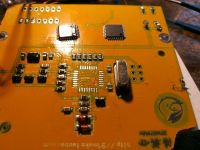
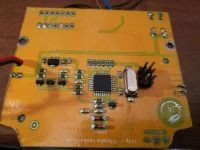 And so after uploading the new software:
And so after uploading the new software: 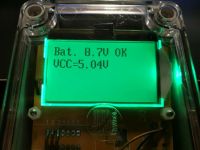
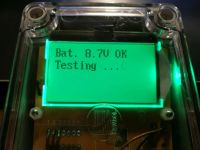
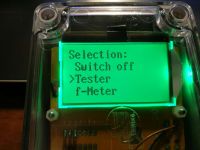
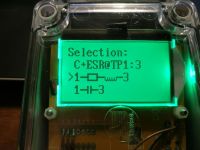
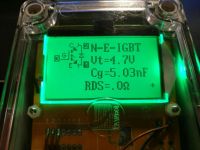 And even IGBT detects ... that the previous version did not have. I'm still reading about the impulser mounting, it can also work, because navigating the menu with this one button is a bit weak.
And even IGBT detects ... that the previous version did not have. I'm still reading about the impulser mounting, it can also work, because navigating the menu with this one button is a bit weak.